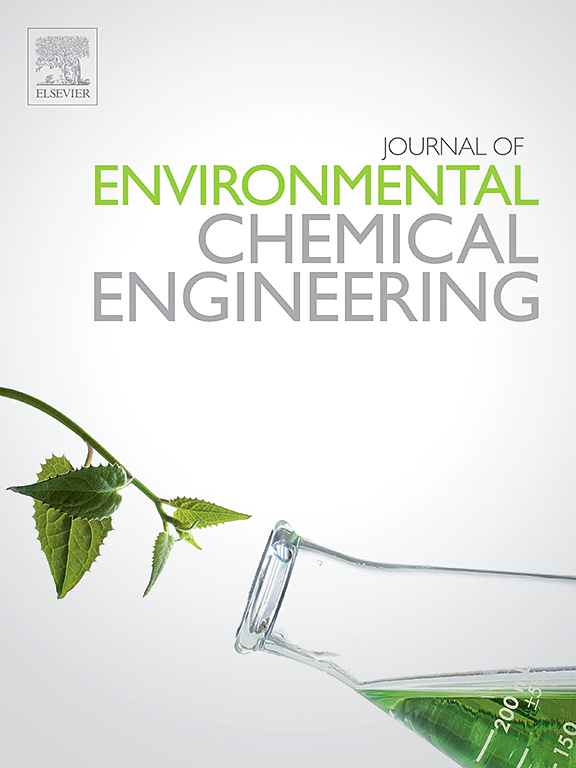Unlocking the potential of down-flow hanging sponge reactors for integrated nutrient management
IF 7.2
2区 工程技术
Q1 ENGINEERING, CHEMICAL
引用次数: 0
Abstract
Downflow Hanging Sponge (DHS) reactor has emerged as a promising attached-growth process for sustainable wastewater treatment, offering energy-efficient and low-sludge solutions for organic carbon and nutrient removal. This review critically evaluates the applications of the DHS process for nitrogen and phosphorus management in both domestic and industrial wastewater. Emphasis is placed on recent advances that enhance nutrient removal efficiency, including bioaugmentation, integration with conventional activated sludge systems, and the use of complete ammonia oxidation (Comammox) microorganisms. Additional innovations involve the functionalization of sponge materials with catalytic or adsorptive properties and the design of redox-stratified reactor configuration to facilitate simultaneous nitrification-denitrification and phosphorus removal. Key challenges, such as treating high-strength wastewaters, adapting to seasonal variability, and advancing kinetic modeling, are critically assessed. Full-scale implementations like up-flow anaerobic sludge blanket (UASB)-DHS and anaerobic baffled reactor (ABR)-DHS demonstrate the system’s versatility under varying loading rates and environmental conditions. The DHS process has also shown potential in aquaculture applications by efficiently managing nitrogenous compounds and maintaining effluent quality. Despite its advantages, challenges remain in treating high-strength wastewaters, optimizing performance under seasonal variability, and developing predictive models for process control. This review outlines key research directions to advance DHS technology focusing on advancing material properties, refining operational designs, and developing robust models to establish DHS as a viable and scalable solution in sustainable wastewater management.
释放下流式悬挂海绵反应器在综合营养物管理方面的潜力
下流式悬挂海绵反应器(DHS)作为一种有前途的可持续污水处理的附着生长工艺,为有机碳和营养物质的去除提供了节能和低污泥的解决方案。本文综述了DHS工艺在生活和工业废水中氮磷管理的应用。重点放在提高营养物去除效率的最新进展,包括生物增强,与传统活性污泥系统的整合,以及完全氨氧化(Comammox)微生物的使用。其他创新包括具有催化或吸附特性的海绵材料的功能化以及氧化还原-分层反应器配置的设计,以促进同时硝化-反硝化和除磷。关键挑战,如处理高强度废水,适应季节变化,推进动力学建模,进行了严格的评估。上流式厌氧污泥毯(UASB)-DHS和厌氧折流板反应器(ABR)-DHS等全尺寸应用证明了该系统在不同负载率和环境条件下的通用性。通过有效管理含氮化合物和保持出水质量,DHS工艺也显示出在水产养殖应用方面的潜力。尽管具有优势,但在处理高强度废水、根据季节变化优化性能以及开发过程控制预测模型方面仍然存在挑战。本文概述了推进DHS技术的关键研究方向,重点是提高材料性能,改进操作设计,开发稳健的模型,以建立DHS作为可持续废水管理的可行和可扩展的解决方案。
本文章由计算机程序翻译,如有差异,请以英文原文为准。
求助全文
约1分钟内获得全文
求助全文
来源期刊

Journal of Environmental Chemical Engineering
Environmental Science-Pollution
CiteScore
11.40
自引率
6.50%
发文量
2017
审稿时长
27 days
期刊介绍:
The Journal of Environmental Chemical Engineering (JECE) serves as a platform for the dissemination of original and innovative research focusing on the advancement of environmentally-friendly, sustainable technologies. JECE emphasizes the transition towards a carbon-neutral circular economy and a self-sufficient bio-based economy. Topics covered include soil, water, wastewater, and air decontamination; pollution monitoring, prevention, and control; advanced analytics, sensors, impact and risk assessment methodologies in environmental chemical engineering; resource recovery (water, nutrients, materials, energy); industrial ecology; valorization of waste streams; waste management (including e-waste); climate-water-energy-food nexus; novel materials for environmental, chemical, and energy applications; sustainability and environmental safety; water digitalization, water data science, and machine learning; process integration and intensification; recent developments in green chemistry for synthesis, catalysis, and energy; and original research on contaminants of emerging concern, persistent chemicals, and priority substances, including microplastics, nanoplastics, nanomaterials, micropollutants, antimicrobial resistance genes, and emerging pathogens (viruses, bacteria, parasites) of environmental significance.
 求助内容:
求助内容: 应助结果提醒方式:
应助结果提醒方式:


